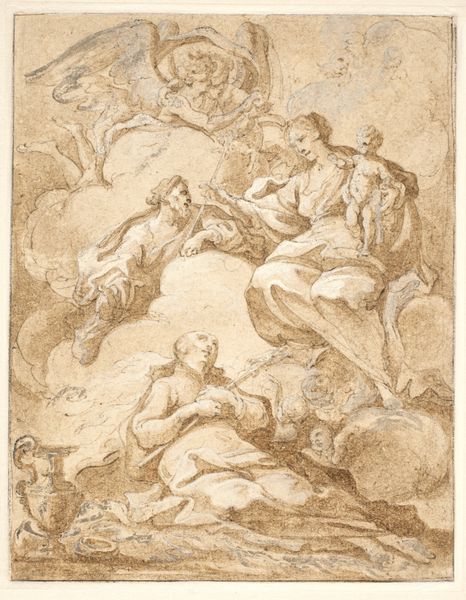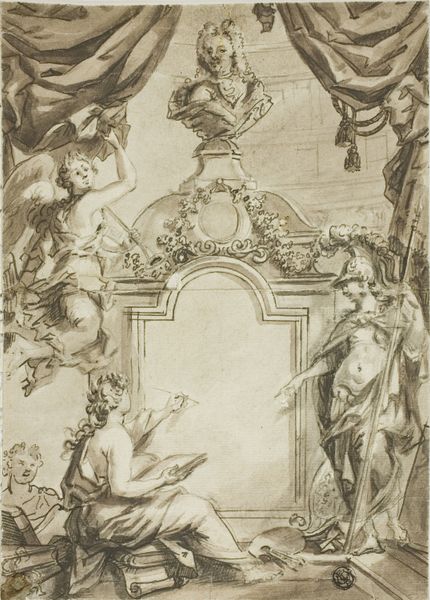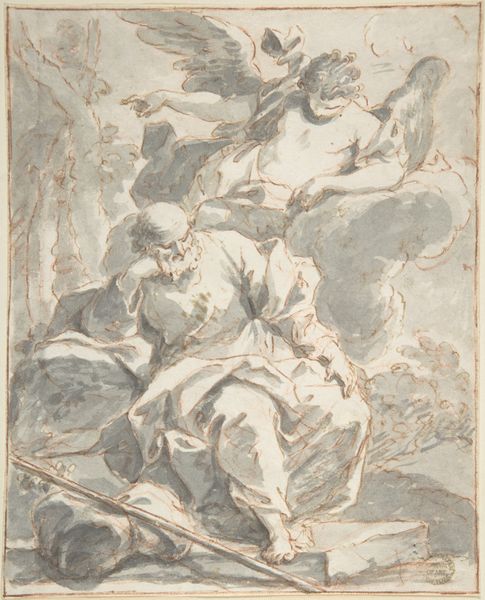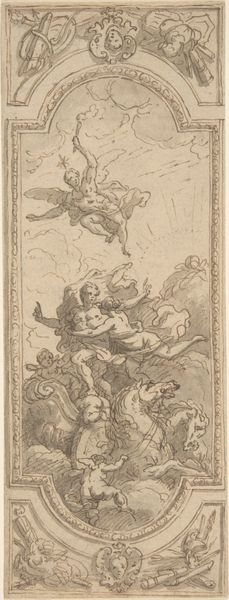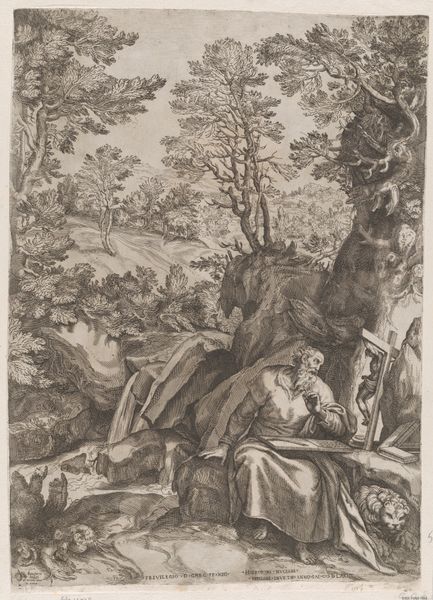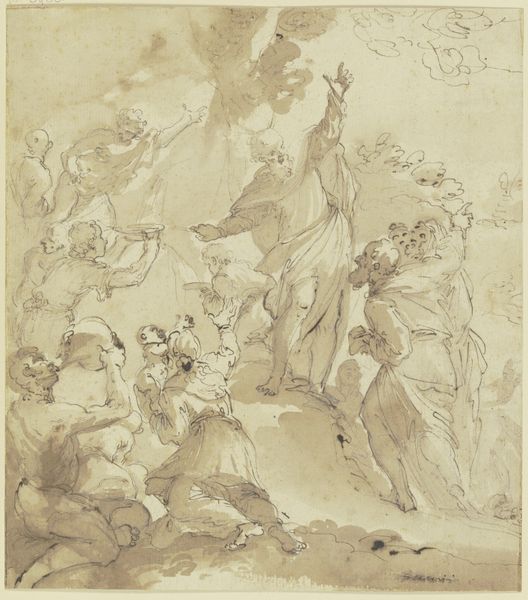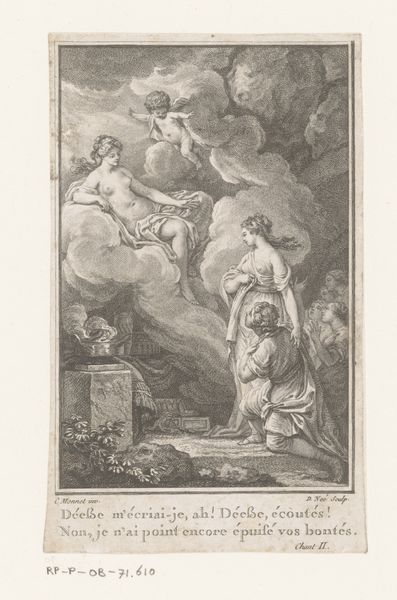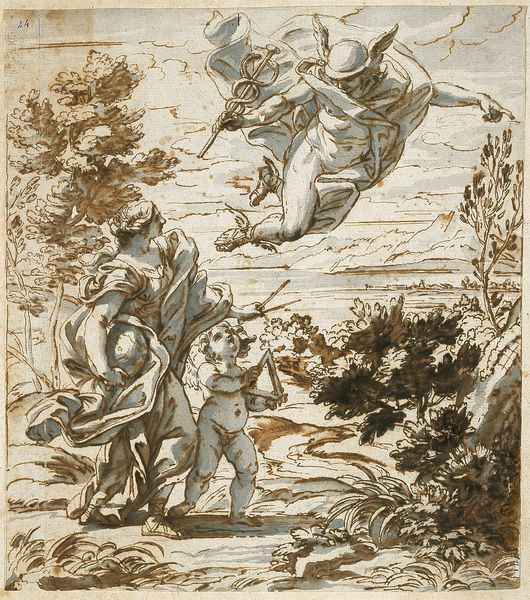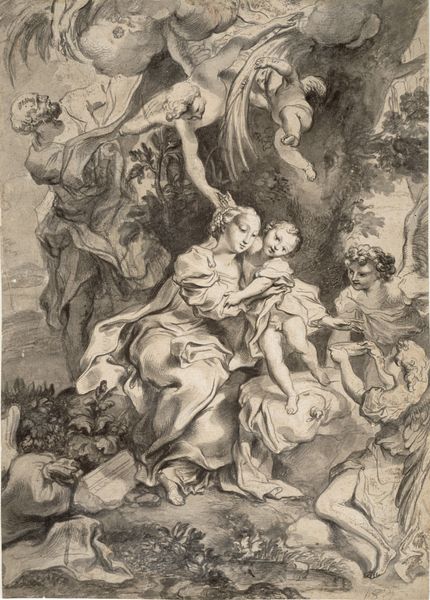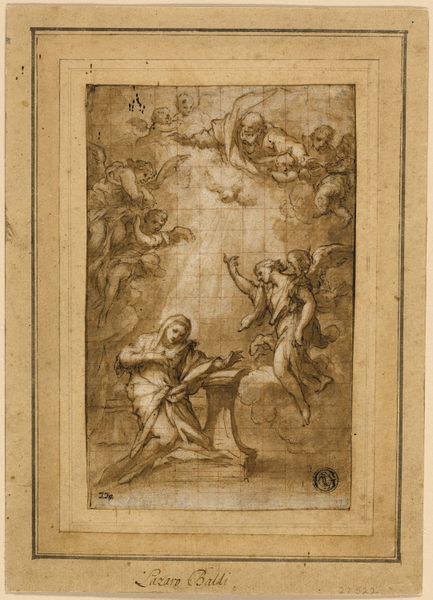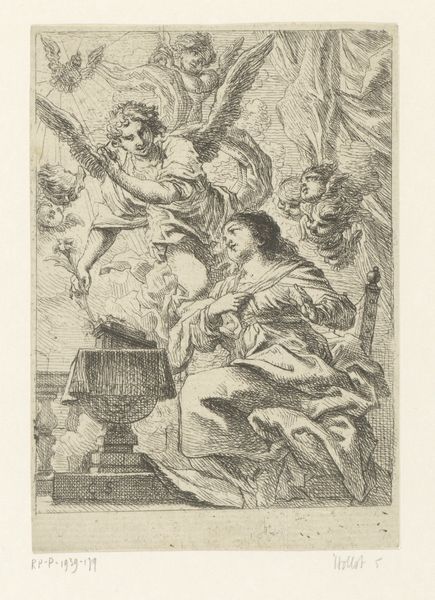
The Holy Family with Angels, in an album containing Recueil de Compositions par Lagrenée Le Jeune (Collection of Compositions by Lagrenée the Younger) 1782 - 1821
0:00
0:00
Dimensions: Sheet: 15 7/8 × 21 7/16 in. (40.3 × 54.5 cm) Plate: 6 7/8 × 4 11/16 in. (17.5 × 11.9 cm)
Copyright: Public Domain
Jean Jacques Lagrenée the Younger created "The Holy Family with Angels" using etching, a printmaking technique dating back to the 1500s. The plate, likely copper or zinc, would have been coated with a waxy, acid-resistant substance called a ground. The artist then scratched an image into the ground, exposing the metal underneath. When the plate was submerged in acid, the exposed lines were eaten away, creating grooves. Ink was then applied to the plate, filling these grooves. Finally, the plate was pressed onto paper, transferring the ink and creating the print. The resulting sepia image has a soft, almost dreamlike quality. It is this combination of precision and fluidity that gives the print its unique appeal. By understanding the labor-intensive process behind this seemingly simple image, we can move beyond conventional art historical categories. Printmaking, like so many other forms of making, involves skill, labor, and ingenuity, regardless of whether it is categorized as art or craft.
Comments
No comments
Be the first to comment and join the conversation on the ultimate creative platform.

